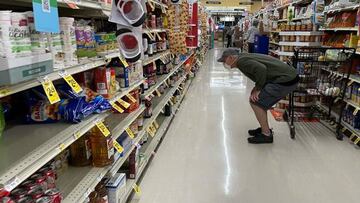What does ‘shrinkflation’ mean? Are product packages getting smaller due to inflation?
The economic pressures pushing up prices across the board are also bringing about manufacturing changes that could leave consumers feeling short-changed.

The consumer price index (CPI), a measure of price increases in the United States, found that the annualised inflation rate for April 2022 was a whopping 8.3%. With inflation so high consumers are noticing significant changes in their purchasing habits.
But another consequence of sustained price rises is ‘shrinkflation’, a related term which describes the trend of products becoming smaller in response to rising production costs. In short, rather than increase the price some manufacturers are simply reducing the size of their products instead.
The term itself is credited to British economist Pippa Malmgren. Researchers have found that consumers are often more conscious of explicit price increase than they are to a moderate reduction in size. However shrinkflation can also reduce consumer connection with a brand.
What products are affected by shrinkflation?
Shrinkflation is not a new concept and is often linked to a change in circumstances which affects certain products more than other. It is particularly common in the food and drink industry where products are subject to more pronounced price fluctuations.
Tea manufacturer Tetley reduced the number of teabags sold in a box in 2010, from 100 down to 88. Also that year Kraft cut the size of Toblerone bars so they weighed 170 grams, rather than 200 grams. In 2014 Coca-Cola reduced the size of its large bottles from 2 litres to 1.75 litres.
However what has been seen in recent months is happening across the board and it is slashing consumers’ purchasing power once again.
The number of tissues in a small box of Kleenex has dropped to 60; Chobani Flips yoghurts are now 4.5 ounces, rather than 5.3 ounces; and tins of Nescafé Azera Americano are 10 grams lighter.
Edgar Dworsky, a consumer advocate and former assistant attorney general in Massachusetts, recounts a number of products he regularly uses which has suffered from shrinkflation in recent months. Cottonelle Ultra Clean Care toilet paper has shrunk from 340 sheets per roll to 312. Folgers coffee is now 43.5 ounces, rather than 51 ounces.
He predicts that more of this will be on the horizon as long as inflation remains high and prices are increasing across the board.
“It comes in waves. We happen to be in a tidal wave at the moment because of inflation,” Dworsky said.
Sometimes consumers get the worst of both words with size reductions accompanied by a price increase. Typically this would be a very unpopular move, and one likely to see them lose customers, but the current global economic situation has made it necessary for some. Japanese snack maker Calbee Inc. announced a 10% weight reduction across its range in May, along with a 10% price increase.






